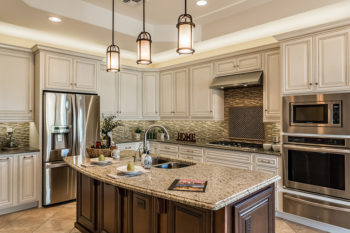Lighting Fixtures
Whether you are thinking about selling your home, or just want to update your current home, paying attention to your lighting fixtures is a great way to brighten your living areas, as well as make them more current with today’s trends and styles.
 There’s nothing worse for an agent to walk into a home that shines everywhere but with the lighting fixtures. This is such an easy and often inexpensive fix. With the advent of so many unique and beautiful lighting options, some lighting fixtures can even double as a focal point of the room itself. While you don’t need to have a fancy, expensive chandelier, taking the time to pick out a dramatic lighting fixture in the right space will make your room look amazing.
There’s nothing worse for an agent to walk into a home that shines everywhere but with the lighting fixtures. This is such an easy and often inexpensive fix. With the advent of so many unique and beautiful lighting options, some lighting fixtures can even double as a focal point of the room itself. While you don’t need to have a fancy, expensive chandelier, taking the time to pick out a dramatic lighting fixture in the right space will make your room look amazing.
For example, on trend right now are tiered lighting fixtures. These fixtures are stacked and multi-dimensional and look fantastic in dining rooms. Another dining room lighting fixture that’s becoming very popular are rectangular chandeliers. These can be anything from an industrial chic chandelier to classic crystals or even brushed nickel with Edison bulbs in glass enclosures.
Pendant lighting is a classic fixture over kitchen islands, but are still on trend, especially some of the larger pendant fixtures with 8 or 10 bulbs. Cage pendants are particularly stylish, yet are traditional. Oversized drum lighting fixtures are another fun trend that also read as classic in many rooms, from the living room and bedroom to the dining room and kitchen.
Whatever lighting fixture you choose, be sure to pay attention to finish and scale. While being matchy-matchy with the rest of the fixtures in your rooms (such as door hardware and faucets) isn’t a requirement, keeping in the same tone and color family will create a harmonious design décor. The scale of the fixture is also important. If you choose an oversized lighting fixture for drama, tone done the rest of the surrounding décor so it doesn’t compete with the scale of the fixture. The bottom line, however, is that going light and bright with beautiful lighting fixtures is a win-win proposition for updating your home, or getting it ready for sale to maximize your resale value.

 Admittedly, listing your home for sale can be a stressful, and often disruptive life event. One of the concerns that home sellers may have is keeping their home secure and safe while it’s on the market, and open to the public for showings. Therefore, here are some tips to help you maximize keeping you and your family safe during this time.
Admittedly, listing your home for sale can be a stressful, and often disruptive life event. One of the concerns that home sellers may have is keeping their home secure and safe while it’s on the market, and open to the public for showings. Therefore, here are some tips to help you maximize keeping you and your family safe during this time. When it comes to prepping the exterior of your home for sale during the holiday season, curb appeal is still very important. So be sure your windows are sparkling clean, your driveway and front walkway have been power-washed, and your landscaping is as neat as a pin. With regard to holiday décor on the exterior of your home, be sure to take into consideration what your neighbors are doing during this time. Does your neighborhood generally decorate to the nines for holidays, or do HOA rules discourage such decoration? Follow those guidelines first and foremost, but if your neighbors are celebrating the holidays with decorations, definitely join in the fun. Be sure to choose tasteful decorations; wreaths for the front door or front gate are always appropriate, as are colored ribbons decorating planters containing seasonal plants. Perhaps forego the giant inflatable turkey or gingerbread man this year, however.
When it comes to prepping the exterior of your home for sale during the holiday season, curb appeal is still very important. So be sure your windows are sparkling clean, your driveway and front walkway have been power-washed, and your landscaping is as neat as a pin. With regard to holiday décor on the exterior of your home, be sure to take into consideration what your neighbors are doing during this time. Does your neighborhood generally decorate to the nines for holidays, or do HOA rules discourage such decoration? Follow those guidelines first and foremost, but if your neighbors are celebrating the holidays with decorations, definitely join in the fun. Be sure to choose tasteful decorations; wreaths for the front door or front gate are always appropriate, as are colored ribbons decorating planters containing seasonal plants. Perhaps forego the giant inflatable turkey or gingerbread man this year, however. With regard to the BINSR, there are three ways the buyer can go after the inspection. First, the buyer can indicate that they accept the premises completely, which means no further work needs to be done. The second option is the buyer can reject the premises, which means the real estate transaction is cancelled and they will not be purchasing the home. The third option, which is the most common scenario, is the buyer “elects to provide the seller an opportunity to correct” whichever items from the inspection the buyer wants corrected before they take possession of the property.
With regard to the BINSR, there are three ways the buyer can go after the inspection. First, the buyer can indicate that they accept the premises completely, which means no further work needs to be done. The second option is the buyer can reject the premises, which means the real estate transaction is cancelled and they will not be purchasing the home. The third option, which is the most common scenario, is the buyer “elects to provide the seller an opportunity to correct” whichever items from the inspection the buyer wants corrected before they take possession of the property. Moving is often said to be one of the top five most stressful live events. And for good reason. Assuming you’re not going to move your belongings yourself, hiring a good, responsible moving company is a large part of the stress of moving. To that end, here are some tips to consider when making that decision.
Moving is often said to be one of the top five most stressful live events. And for good reason. Assuming you’re not going to move your belongings yourself, hiring a good, responsible moving company is a large part of the stress of moving. To that end, here are some tips to consider when making that decision.